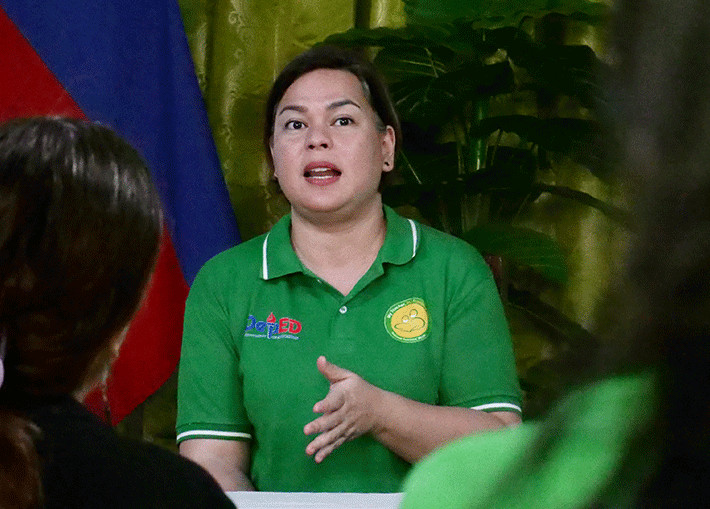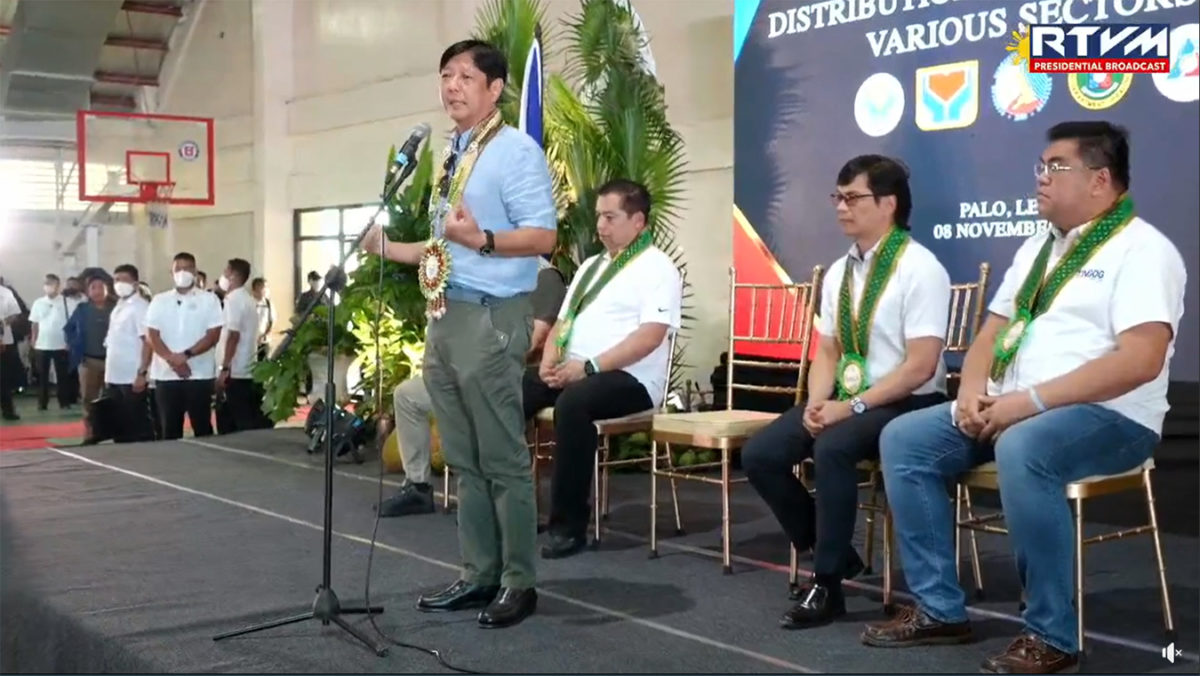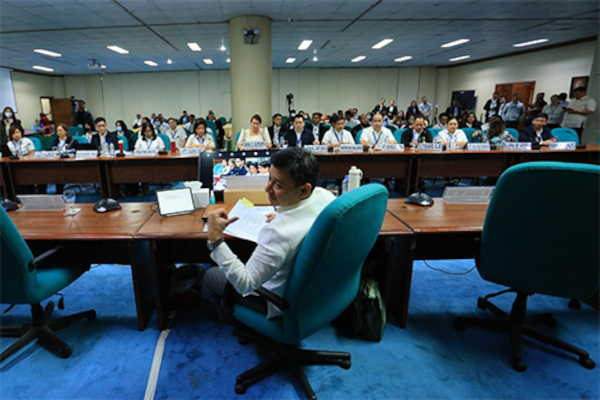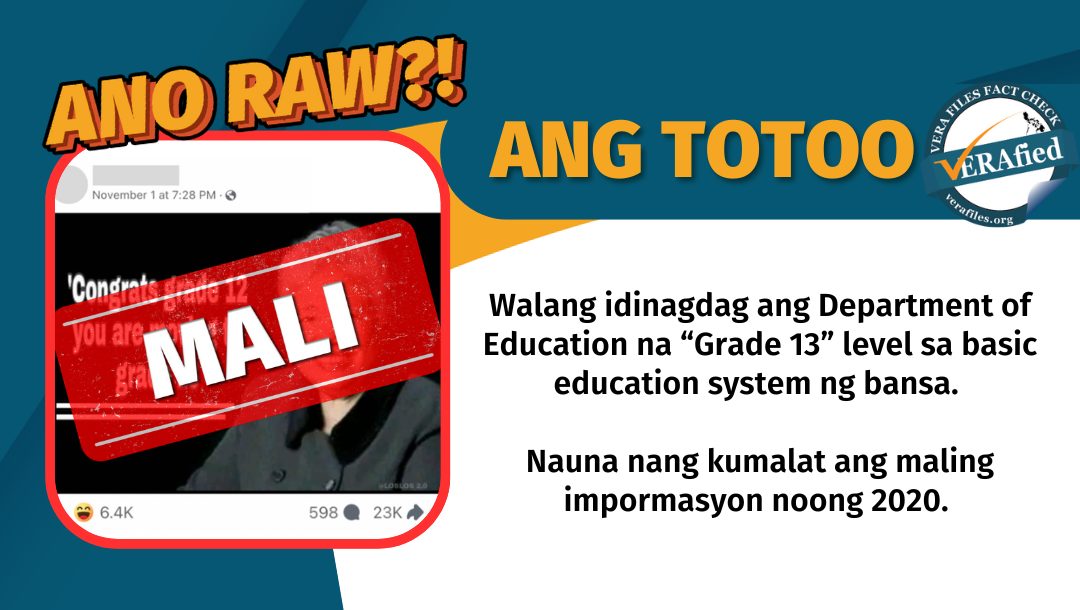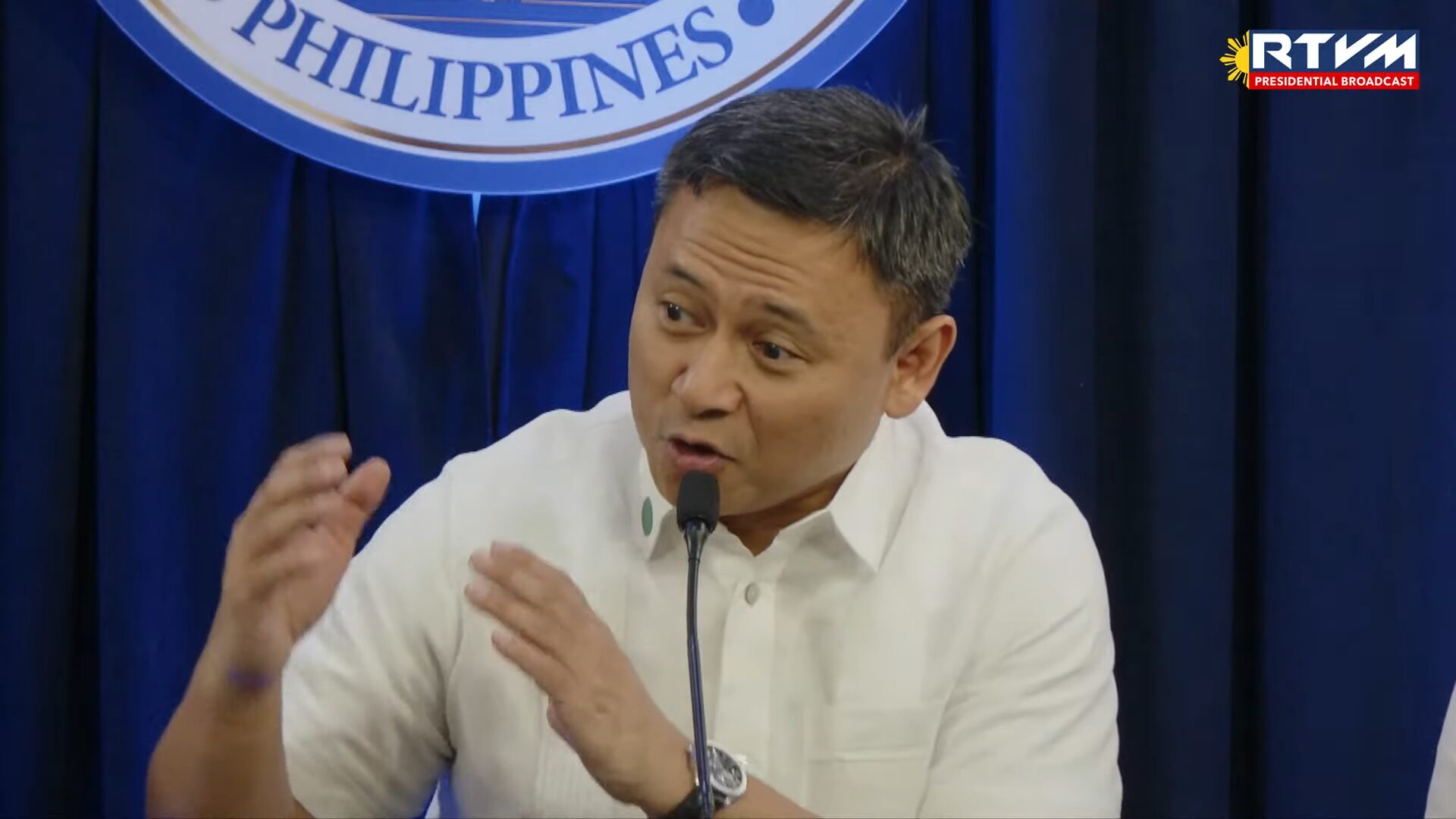
Billions of pesos are allocated annually for classroom and school building construction nationwide. Yet despite the dismal utilization rate of these funds, Education Secretary Sonny Angara said the department has “insufficient” funds to address the perennial shortage of classrooms.
In a sideline interview during the 50th Philippine Business Conference Expo in Pasay City last October 28, Angara said their budget is not enough to address the classroom shortage.
“What is clear to us right now is that we can’t do it under the General Appropriations Act (GAA) [for 2025] and under our current budget,” he told newsmen.
The House of Representatives approved in September the Department of Education’s (DepEd) P793.1 billion appropriations, the biggest chunk in the proposed P6.35 trillion 2025 national budget. Of the amount, P29.3 billion is allotted for basic education facilities, which includes the construction of classrooms.
For 2024, DepEd received a P715.2 billion budget, with P24.6 billion earmarked for basic education facilities funds or BEFFs.
BEFFs from 2016 to 2024 ranged from P3.1 million (2022) to as high as P109.3 billion (2017) based on the Department of Budget and Management records.
However, Budget and Accountability Reports (BAR) from DepEd show that classroom construction accomplishment rates have never gone beyond 85 percent since 2016.
When measured using only the budget allocated per year, most accomplishments are either at 0 or 4 percent since the start of the Duterte administration, although it recorded its highest in 2021 at 82 percent.
The target number of classrooms for construction annually also fell from 91,000 in 2016 to 12,445 in 2024. The targets set were to utilize both the fiscal year’s (FY) funds and spill-over funds – or the excess budget from previous FYs as indicated in the GAA.
The BAR as of the 3rd quarter of 2024 showed that 111 classrooms have been constructed using the FY 2024 budget, while 2,257 were built using accumulated spill-over funds since 2021.
Angara admitted the slow accomplishment rates in an August 13 press briefing and said that at the time of his takeover in July, they were still at the procurement stage and had made little progress on construction.
“So, that’s why mababa historically ang tinatawag na obligation rate or disbursement rate – or construction rate – ng DepEd with classrooms, because constructing classrooms is a little more complicated than constructing a road. There is more work to be done beforehand,” he said.
Classroom deficiency
A 2023 DepEd database showed a total of 165,443 estimated classroom shortage nationwide.
Region IV-A topped the list with 31,010 deficiencies, followed by the National Capital Region (NCR) with 24,866, and the Bangsamoro Autonomous Region in Muslim Mindanao (BARMM) and Region III having 13,237 and 13,119, respectively.
A study by the Philippine Institute for Development Studies shows that the nationwide classroom-to-student ratio in public schools from School Year 2019-2020 is at 1:29 (elementary), 1:39 (junior high school), and 1:31 (senior high school).
NCR has the highest ratio disparity in the elementary level at 1:46, and is tied with Region IV-A in the junior high level at 1:48. BARMM needs the most rooms for senior high students with a ratio of 1:48.
To expedite the building of more classrooms every year, there needs to be a boost in procurement processes, Angara said in an ambush interview.
“Kailangan magbago ‘yung current system na ‘yun at nakikita ko ‘yung early procurement activities na tinatawag. Ginagawa ho yan sa Department of Public Works [and Highways]. Sana gawin din namin through coordination between DepEd and DPWH,” the secretary said.
Early procurement before budget
DepEd Director for Education Programs Management Office Atty. Tara Rama echoed the sentiment in an October 11 event of the 2nd Congressional Commission on Education (EDCOM 2), saying that it tops the list besides modification delays, failed bidding, and contract cancellations.
“Despite efforts to mitigate these challenges, procurement remains to be the primary reason for underutilization of the BEFF (basic education facilities fund),” she said.
The government seemed to be aware of the concern since 2016, hence the creation of early procurement activities (EPAs) under the Revised Implementing Rules and Regulations of RA 9184, or the Government Procurement Reform Act.
Through EPAs, DepEd can undertake procurement activities, including selecting possible classroom sites and consulting services for the next year even without having the approved budget beforehand.
Despite this, the BARs still show over a hundred to no classrooms constructed using the FY funds as of the first semester of every year, which shows unfulfilled gaps even with the existence of such laws.
Relying on partnerships, blended learning
In the October 28 interview, Angara stated that they are looking for possible sources of funds through public-private partnership (PPP) proposals before creating a timeline for classroom construction.
PPPs allow for private firms to enter into a contractual agreement with the government in funding, constructing, and operating a government service, classroom construction included.
While such agreements may be dubious for some, House Committee on Basic Education Chairperson and EDCOM 2 Co-Chair Roman Romulo plans to rely on the advantages of the private sector.
“Let’s face it, we will not address that 165,000 backlog in classrooms anytime soon. And it’s not just a funding issue ha, ‘yung bottleneck nakikita ang daming logistical and bureaucratic challenges. ‘Wag na tayong matakot sa private contractors,” he said.
Angara, during the August press briefing, specifically eyed the revival of RA 8525 or the “Adopt-a-School” program as a PPP proposal, where a private entity “adopts,” or assists a public school on a specific aspect within a given time.
He added, “‘Yun talaga has been proven very effective in mobilizing the private sector kasi may insentibo siya d’on. May tax deduction siya d’on eh. Mababawas niya sa kinita niya or sa income tax niya ‘yung ibibigay niyang classroom – iyong halaga ng ibibigay niyang classroom.”
While waiting for new classrooms, the DepEd secretary wants to improve blended learning for students.
“Kasi hindi naman natin magagawa iyong… all these classrooms overnight or in a matter of a few years. Some are talagang… ang laki noong shortage so we want to do the blended learning. So, i-improve namin iyong blended learning,” he said.
The proposed GAA for 2025 is headed to the Bicameral Conference Committee to reconcile the House and Senate versions of the budget before the final bill is signed into law.
(The author is a journalism student at the Polytechnic University of the Philippines and is doing her internship with VERA Files.)
